Green Shoots and Lawsuits
As investors become more optimistic about the state of the economy and asset prices, we’ll see if Bitcoin can join in on the party as it overcomes the regulatory calamities ensnaring the broader cryptocurrency industry.
Swan Private Insight Update #24
This report was originally sent to Swan Private clients on June 9th, 2023. Swan Private guides corporations and high net worth individuals globally toward building generational wealth with Bitcoin.
Benefits of Swan Private include:
- Dedicated account rep accessible by text, email, and phone
- Timely market updates (like this one)
- Exclusive monthly research report (Insight) with contributors like Lyn Alden
- Invitation-only live sessions with industry experts (webinars and in-person events)
- Hold Bitcoin directly in your Traditional or Roth IRA
- Access to Swan’s trusted Bitcoin experts for Q&A
Last week started with a couple of bombshells as the SEC hit two of the largest cryptocurrency exchanges in the world, Binance and Coinbase, with lawsuits on back-to-back days.
Coinbase has been charged with operating an unregistered securities exchange, broker, and clearing agency while offering unregistered securities via its staking-as-a-service products. The cryptocurrencies named explicitly in the complaint as securities were: SOL, ADA, MATIC, FIL, SAND, AXS, CHZ, FLOW, ICP, NEAR, VGX, DASH, and NEXO.
Coinbase CEO Brian Armstrong responded to the allegations in a tweet stating that Coinbase will contest the charges in court and deny any wrongdoing.
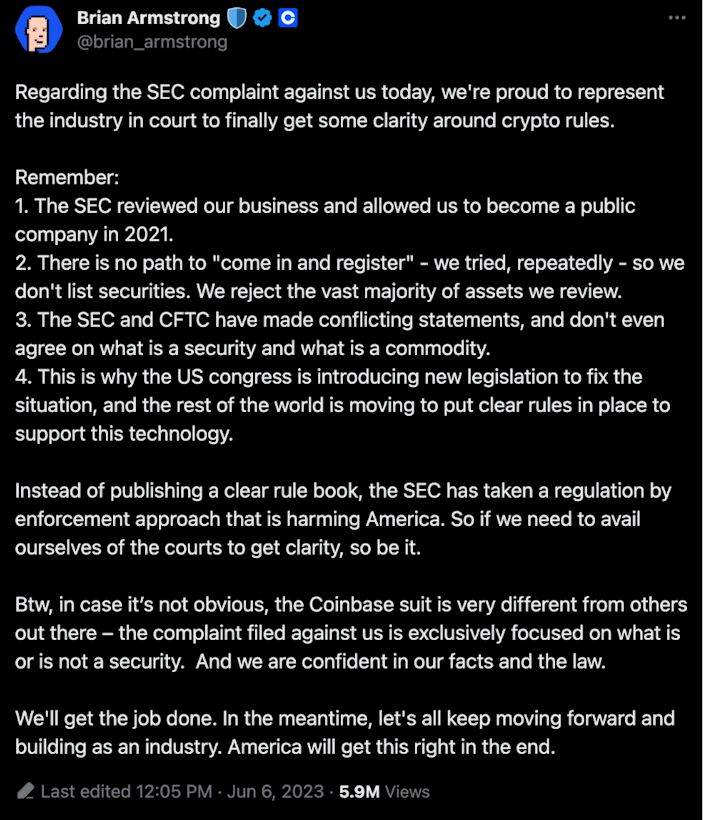
Coinbase’s main defense seems to be that they attempted to meet with the SEC on multiple occasions to register, but the SEC refused to meet with them and provide a path for registration.
Furthermore, Coinbase argues that the SEC failed to provide clear guidelines distinguishing between what is and isn’t deemed a security.
But is this really true?
The SEC argues that they did provide clarity; Coinbase just didn’t like it. This is evident in the communications between Coinbase and the SEC when it was registering to go public.
In Coinbase’s own S-1 filing, it states,
“A particular crypto asset’s status as a ‘security’ in any relevant jurisdiction is subject to a high degree of uncertainty, and if we are unable to properly characterize a crypto asset, we may be subject to regulatory scrutiny, investigations, fines, and other penalties, which may adversely affect our business, operating results, and financial condition… Regardless of our conclusions, we could be subject to legal or regulatory action in the event the SEC, a foreign regulatory authority, or a court were to determine that a supported crypto asset currently offered, sold, or traded on our platform is a ‘security’ under applicable laws.”
Additionally, the SEC responded to the draft of Coinbase’s S-1 filing in this letter, where it instructed Coinbase to change the language of the filing to clarify that there are risks to listing these digital assets that may be considered unregistered securities.
The letter states:
“We note your disclosure that ‘[t]he test for determining whether any given crypto asset is a security is a highly complex, fact-driven analysis that evolves over time, and the outcome is difficult to predict.’ Please emphasize that this test is a legal test and is different than your scoring model, which is not a legal standard and only a risk-based assessment that does not preclude legal or regulatory action based on the presence of a security.
We note your disclosure that:
“[p]ublic statements by senior officials at the SEC indicate that the SEC does not intend to take the position that Bitcoin or Ether are securities (in their current form).” Please revise this risk factor to clarify that Bitcoin and Ether are the only digital assets as to which senior officials at the SEC have publicly expressed such a view, and further clarify that as to all other digital assets there is currently no certainty under the applicable legal test that such assets are not securities, notwithstanding the predictions of your scoring model.”
The “scoring model” to which the SEC refers is the Crypto Rating Council (CRC). Coinbase, in collaboration with other institutions, created the CRC, intending to establish a rating standard to determine whether a digital asset qualifies as a security. Instead of employing the Howey Test — also known as the rule of law — Coinbase applied this self-created rating system to each digital asset before deciding to list it on its platform.
The SEC explicitly stated at the time of Coinbase’s public registration that this rating system does not constitute a legal test.
The SEC alleges that Coinbase fully understood the risks of listing these digital assets apart from Bitcoin, which all lacked regulatory clarity, and consciously chose to list them anyway using their own scoring system. Coinbase believed this scoring system would offer some regulatory protection and gave them the confidence to list these digital assets, even when some of them were considered “high risk” according to their scoring model. The SEC states in the complaint:
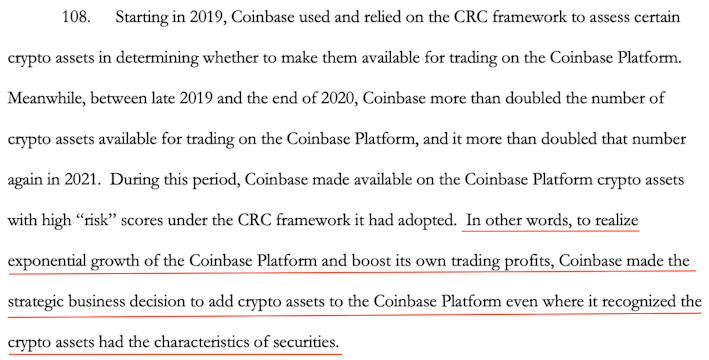
Today, Coinbase lists over 250 digital assets despite nearly all lacking regulatory clarity. Furthermore, Coinbase markets these “other crypto assets” on its social media accounts and website. These advertisements failed to disclose the tradeoffs between Bitcoin and these inferior cryptocurrencies.
Often, Coinbase falsely marketed them as secure, decentralized, and good long-term investments when they proved to be anything but. It’s clear why Coinbase markets these digital assets to its clients. These “other crypto assets” made up nearly half of Coinbase’s trading volume and transaction revenue in Q1 2023.

Part of the reason they felt compelled to take this risk was not just the increased revenues but also because Coinbase began feeling pressure to list more tokens after it began losing market share in 2021.
Coinbase’s Q1 2021 10-Q filing reports how it was losing market share to competition that is “supporting certain crypto assets that we do not currently support.”

That main competition was Binance, which exploded onto the scene in 2017. Part of Binance’s user acquisition strategy revolved around listing every digital asset under the sun without regard to securities laws.
After just over a year of operation, Binance had already listed 151 coins on its platform, compared to Coinbase’s nine. As a result, it’s unsurprising that Binance faces the same charges as Coinbase in its SEC complaint.
While Coinbase can position itself as a victim and criticize the SEC’s regulation-by-enforcement approach, it’s clear that it assumed regulatory risks by listing these digital assets in response to heightened competition and the allure of quick profits.
Following this regulatory action, Coinbase’s stock plunged nearly -10%. Since its IPO, Coinbase’s stock is now down -81.4% compared to Bitcoin, down -55.4% over that same timeframe.
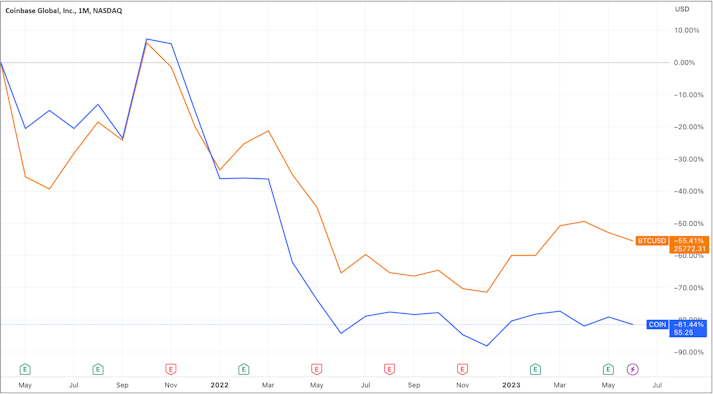
The chart above highlights how Coinbase stock could have been a better substitute for owning spot bitcoin. Any investor who used this stock as a proxy to gain exposure to Bitcoin is learning the harsh lesson that there is added regulatory and business risk when holding Coinbase equity. Such risks simply do not exist when investing directly in spot Bitcoin.
Binance was also charged with operating as an unregistered exchange, broker, and clearing agency, and I imagine it won’t be difficult for the SEC to substantiate this given the internal messages it obtained:

Binance, however, faces more severe allegations in its SEC complaint than Coinbase. The company has been charged with issuing its unregistered securities with its BNB and BUSD tokens.
It’s also accused of misleading clients by commingling and diverting their funds to offshore trading firms owned and controlled by Binance CEO CZ, who allowed these firms to engage in manipulative trading, artificially inflating the platform’s trading volumes. This nefarious activity is what distinguishes the Binance complaint from the Coinbase one.
If this situation reminds you of the charges laid against FTX and Alameda Research earlier in the year, you’re not alone. The similarities between what has been disclosed in the SEC’s complaint against Binance and FTX are striking.
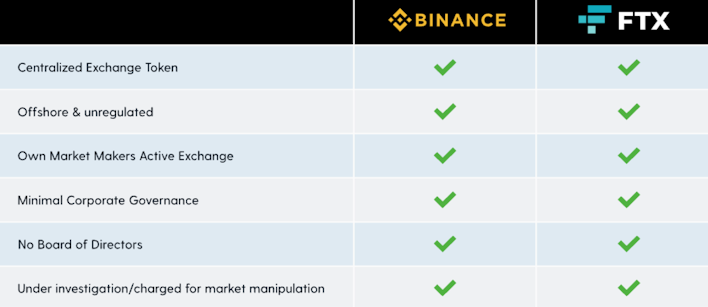
The SEC has now requested that the courts freeze Binance’s assets and appoint a receiver to liquidate US-based holdings.
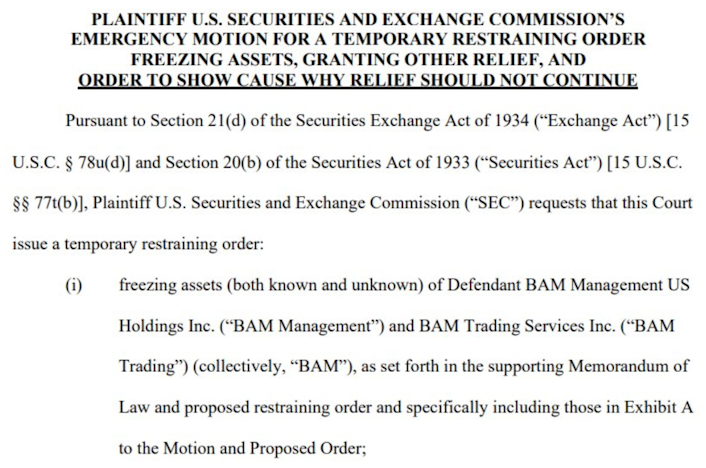
This action is likely based on the suspicion that Binance is hiding the state of its balance sheet or the real location of client funds. The move signals the SEC’s concern about the activities uncovered in their investigation of Binance.
The SEC’s charges against Binance, which included market manipulation and commingling of user funds, come nearly a month after a separate CFTC lawsuit exposed potential violations of Bank Secrecy Laws.
It also revealed a lack of internal controls that facilitated illicit activity, including the involvement of terrorist groups on the platform.
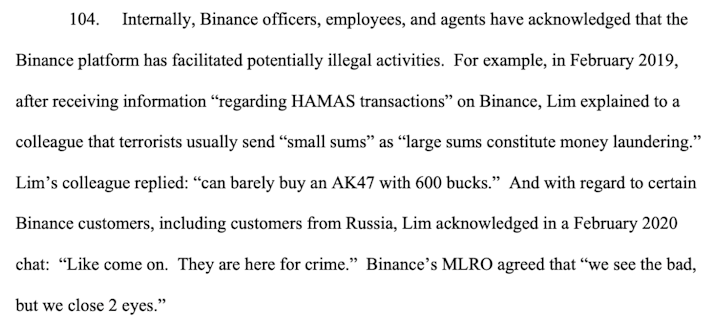
The point here is that this SEC complaint could become the least of Binance’s worries, given the severity of these charges. It is well known that the DOJ has been investigating the offshore exchange for years.
Currently, the potential consequences of the SEC and CFTC complaints are:
Cessation of Binance.US operations
Disgorgement
Fines
If the DOJ decides to act against Binance, we could be discussing criminal charges and potential jail time for those involved, threatening not just Binance.US, but the entire international exchange too.
The market reacted in various ways in response to these regulatory developments. There was considerable volatility as the market absorbed the news.
Many of the cryptocurrencies that were specifically named in the complaint as unregistered securities saw massive sell-offs when priced against Bitcoin. These cryptocurrencies are down an average of -26% against Bitcoin since the lawsuits were made public.
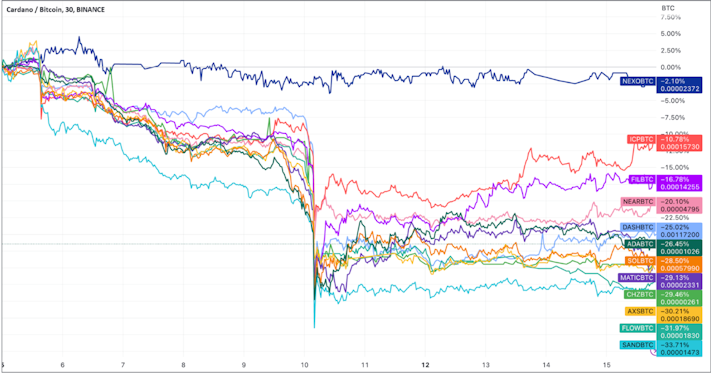
Upon examining Bitcoin’s market capitalization in relation to the broader cryptocurrency market capitalization outside Ethereum, Bitcoin is up over 10% since the SEC complaints were announced. This same metric is now up 50% in 2023 as Bitcoin continues to take market share from the rest of the cryptocurrency industry, which is embroiled in regulatory uncertainty.
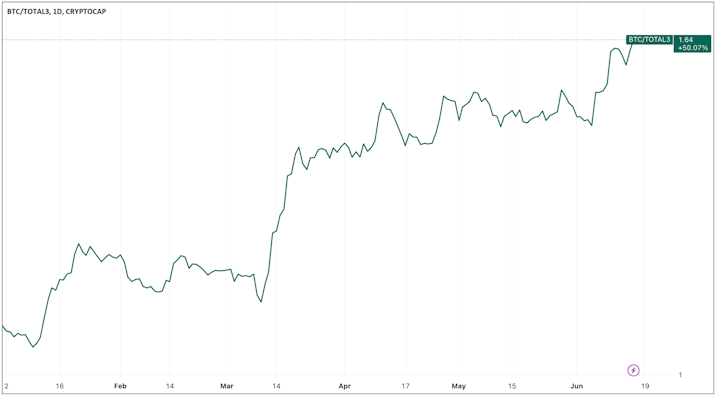
Given that Bitcoin, unlike other cryptocurrencies, has no issuer or founding team and is sufficiently decentralized to be classified as a commodity, it does not pass the Howey Test and is thus categorically not a security. Increasingly, investors are selling off other cryptocurrencies for fiat or Bitcoin as they understand this fact.
Compounding the problems for these other cryptocurrencies is that they continue to be delisted from major exchanges and platforms, exacerbating their liquidity woes.
Binance.US announced that it would be delisting over 100 trading pairs after the SEC complaint was announced.
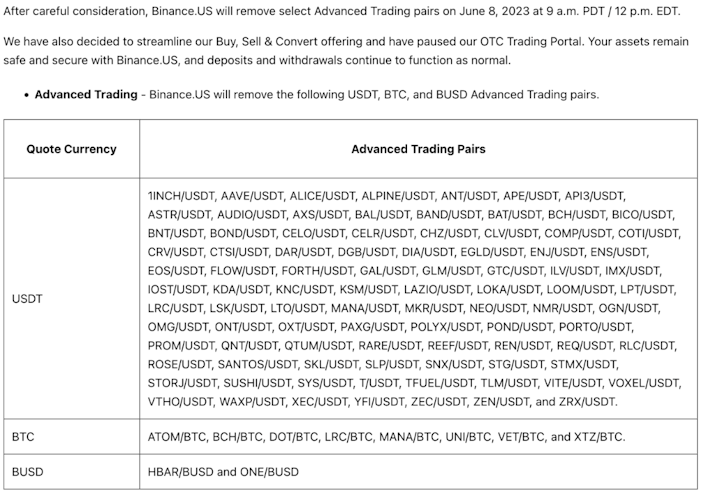
Binance
Popular trading platforms, eToro and Robinhood, similarly delisted these cryptocurrencies in response to the regulatory actions.

Celsius, currently going through its own bankruptcy proceedings, also announced that it will sell all the altcoins it holds for Bitcoin and Ethereum starting on July 1st.

This could result in around $215 million flowing from these other cryptocurrencies and into Bitcoin and Ethereum.
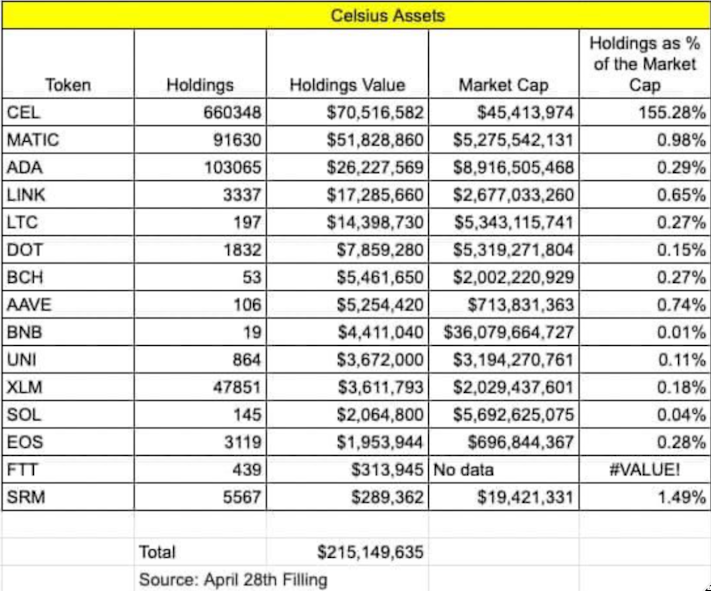
The prices and liquidity of these cryptocurrencies will likely continue to come under pressure as more platforms delist them to protect themselves against regulatory enforcement actions.
Another trend we observe in response to this news is a spike in Bitcoin withdrawals from Binance as users withdraw their Bitcoin from the embattled exchange.
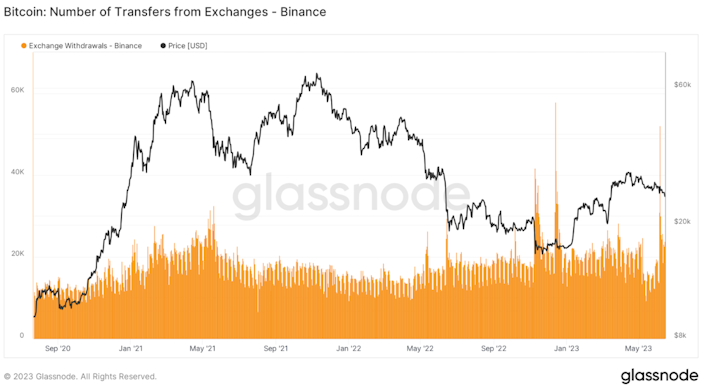
Seeing users withdraw their Bitcoin from this offshore exchange, now charged with defrauding them, is a positive development.
Bitcoin Decouples From Equities
Bitcoin’s price wasn’t immune to the volatility around these regulatory events. Bitcoin initially dropped on the news before spiking back up and has now found some support at $25,000. This occurs as other risk assets, such as the Nasdaq, continue to rise. Due to the endogenous events in the cryptocurrency industry, Bitcoin has decoupled from the Nasdaq after being positively correlated to the index over the last couple of years.
Since Bitcoin topped out above $30,000 in May, the Nasdaq has rallied by +14.9%, while Bitcoin has fallen by -8.6%.
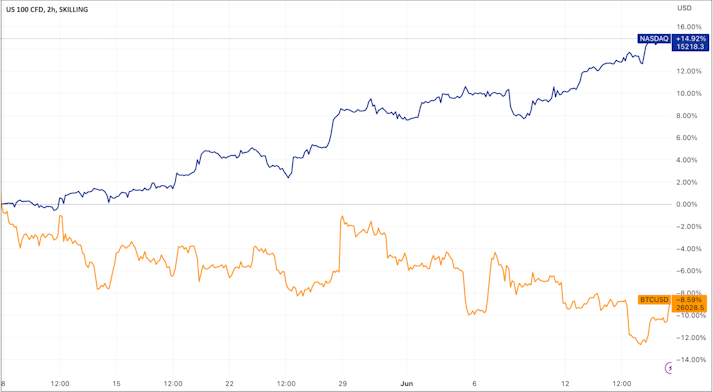
Over the past couple of weeks, we have seen equities continue to rally in the wake of the debt ceiling being lifted and a U.S. default being narrowly avoided. Since then, the market has responded to economic data points and a pause in the Fed’s rate hikes, providing further green shoots for the stock market.
The S&P 500 is now up over 20% from its low in October of the previous year, which officially marks a new bull market.
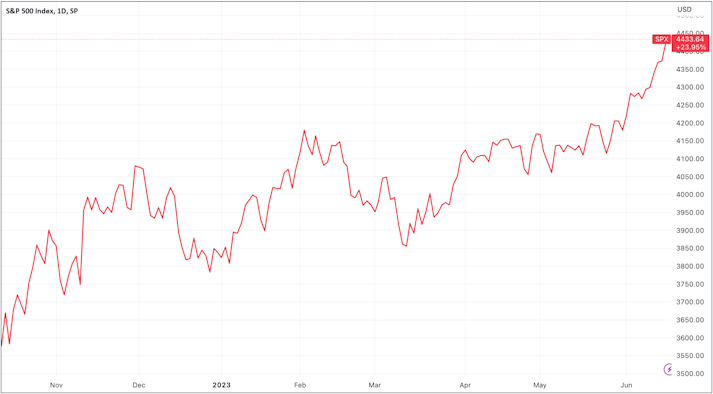
So far in June, the Russell 2000 has outperformed the S&P 500 and Nasdaq by over 2%. This shows that the stock market rally is broadening, alleviating concerns over the lack of market breadth in this recent move.
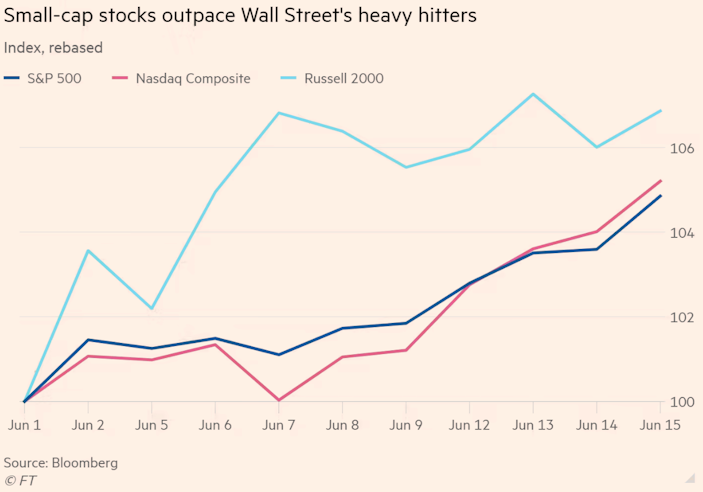
The rally in stocks has continued, leaving stock market bears in disbelief. This has caused some institutions to rethink their expectations of a recession in 2023.
Goldman Sachs revised the probability of a recession downwards:

The Institute of International Finance was also in the headlines changing its tune:

The sentiment is noticeably shifting in the markets as investors attribute a greater probability to the “soft landing” narrative and start believing that this rally is more than just the longest bear market rally in history (the second-longest was seven months in 1938).
This rise in equity prices can be attributed to three bullish developments in the last month:
The resolution of the debt ceiling drama
A continuing decrease in inflation metrics
The Fed pausing interest rate hikes for the first time in 15 months
After the US narrowly avoided defaulting on its debt obligations, the second tailwind for asset prices came when headline CPI came in below expectations at 4.0% YoY, and core CPI services ex-housing dropped to 4.6% YoY, its slowest pace since February 2022. The rate of change of this CPI decline since it peaked in June 2022 is now one of the fastest in history.
The reported inflation in May was mostly related to rises in housing prices, higher used car prices, and food prices.
The shelter component continues to support CPI metrics. Given that Owner’s Equivalent Rent operates with a lag, and we know that rent prices have been in decline, we should expect this to decrease the headline number in the coming months.
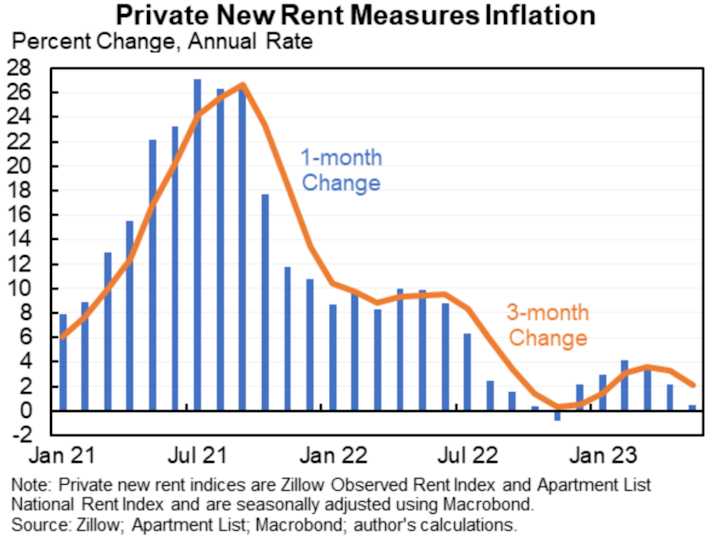
Lastly, we have seen the PPI fall off a cliff. After peaking at around 11% YoY last year, it has declined for the 11th consecutive month and sits at 1.1% YoY. It’s important to note that, historically, the PPI typically leads the CPI.
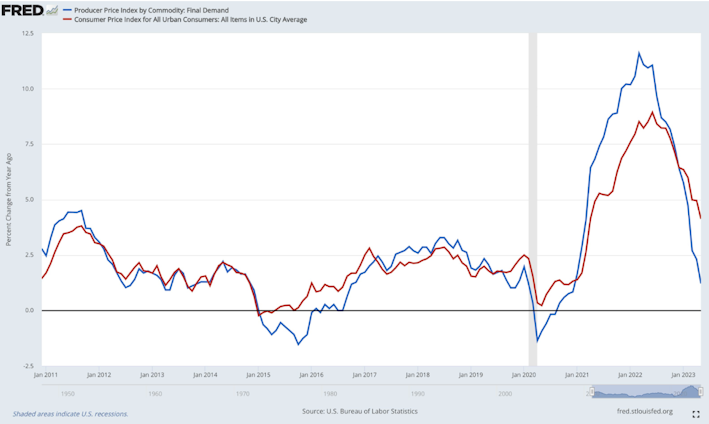
These signs of easing inflation ultimately gave the Fed room to pause interest rate hikes for the first time since it began raising them in March 2022.
When looking at the Fed policy over the last 20 years, one can observe that a Fed pause after a hiking cycle has never been followed by additional rate hikes, despite the language from Fed officials that more rate hikes are on the table at future meetings.
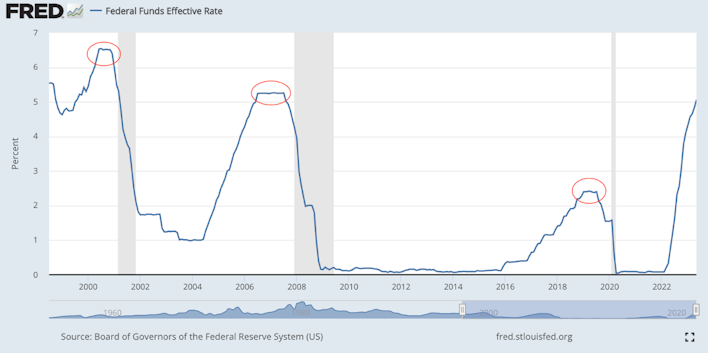
Investors viewed this pause as a positive development, and equities soared. Historically, on average, the S&P 500 has returned 14% one year after the final Fed hike, based on data from 1954.
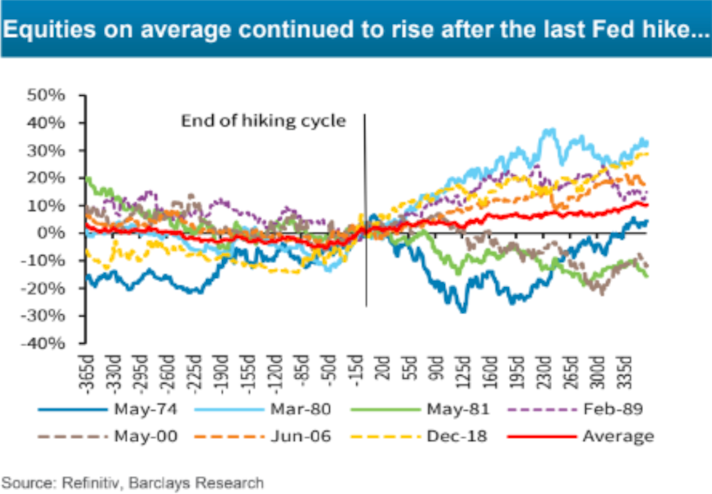
As investors become more optimistic about the state of the economy and asset prices, we’ll see if Bitcoin can join in on the party as it overcomes the regulatory calamities ensnaring the broader cryptocurrency industry.
One thing is certain: the long-term fiscal problem, which will almost certainly require greater deficit spending and the Fed monetizing that spending one day, remains an unsolved issue. Ultimately, this makes Bitcoin’s value proposition as a decentralized store of value so attractive.
The most interesting line of questioning at the FOMC press conference arose when Edward Lawrence of Fox Business asked Fed Chairman Jerome Powell about the CBO projections regarding the federal debt and deficit and whether he would discuss fiscal responsibility with policymakers.
Jerome Powell responded, saying, “We don’t do that. I will say we are on an unsustainable fiscal path, which needs to be addressed over time.”
Edward Lawrence: “Is there any conversation around the Federal Reserve financing some of that debt coming down the pipeline?”
Jerome Powell: “No, under no circumstances.”
This exchange highlighted the elephant in the room — our fiscal situation.
Who will be buying all of our Treasuries that need to be issued in the future if foreigners and commercial banks are no longer buying?
The answer is the Federal Reserve.
So, despite Jerome Powell stating that the Fed isn’t even considering financing the government debt “under any circumstances,” if it becomes an issue of financial stability or national security, then this will happen.
The Fed will once again step in to finance the debt to prevent yields from spiking and our government from becoming insolvent.
When you zoom out, it becomes clear who will end up buying all these treasuries:
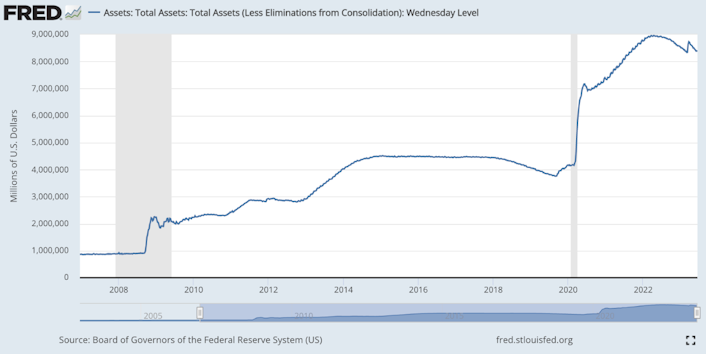
And in that scenario, the dollar will ultimately be sacrificed once again. Yellen all but admitted the long-term trend of the dollar in a recent hearing:
Not only will the dollar be sacrificed in the future when the accommodative fiscal and monetary policies inevitably return when the debt problem rises to the surface once again, but it will also be harmed as it continues to be weaponized by the U.S. government.
This will prompt foreign governments and investors to seek alternative reserve assets to diversify that risk.
Bitcoin represents a neutral reserve asset that is impossible to debase. As the world continues down this path of monetary debasement and currency wars, Bitcoin will increasingly become an attractive reserve asset for individuals and governments.
The U.S. government has a spending problem. The federal deficit has continued to explode this year, already up $2.1 trillion over the last 12 months. Although the price of Bitcoin is getting dragged down by regulatory attacks against the broader cryptocurrency industry, it’s essential not to lose sight of the bigger picture. Bitcoin is the one word you won’t find in these lawsuits because it is unique amongst a sea of crypto-pretenders.
It is a scarce, decentralized store of value.
Governments and central banks will have to print again due to the unsustainable fiscal path we’re currently walking on, and when that time comes, Bitcoin, as the world’s only digital hard money, will likely shine.
Market Overview
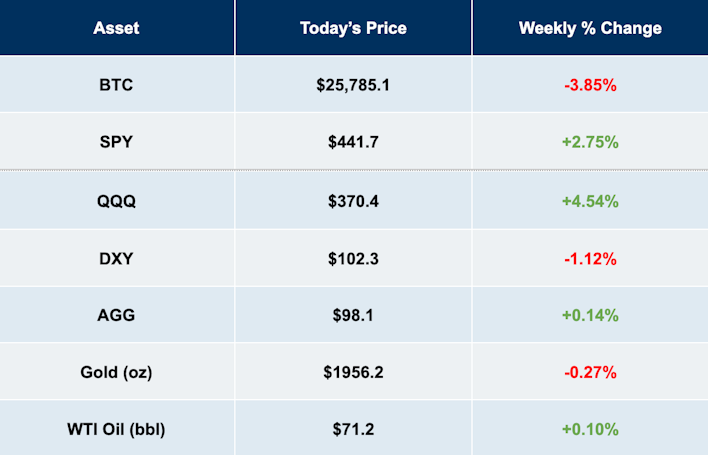
Tradingview, Prices as of 6/16/23
As the regulatory landscape shifts, it’s wise for investors to consider safeguarding their holdings by moving them from Coinbase into secure cold storage. Additionally, converting altcoins to Bitcoin and opening an account with a Bitcoin-only company could prove to be a strategic move in light of these changes.
Your instinct may be to convert your Bitcoin to dollars before withdrawing your money from Coinbase. But it’s worth considering the reasons why Bitcoin is the best money in human history. You don’t want to part with such a precious asset lightly.
** UPDATE: It was reported n July 31st, ahead of initiating legal proceedings against the exchange, the US Securities and Exchange Commission instructed Coinbase to halt trading in all cryptocurrencies except for Bitcoin. This move indicates the agency’s intention to exert regulatory jurisdiction over a broader section of the market.
According to Brian Armstrong, the CEO of Coinbase, the SEC provided this recommendation before taking legal action against the company, which is listed on Nasdaq, for its failure to register as a broker.
Swan IRA — Real Bitcoin, No Taxes*
Hold your IRA with the most trusted name in Bitcoin.
Sam Callahan is the Lead Analyst at Swan Bitcoin. He graduated from Indiana University with degrees in Biology and Physics before turning his attention towards the markets. He writes the popular “Running the Numbers” section in the monthly Swan Private Insight Report. Sam’s analysis is frequently shared across social media, and he’s been a guest on popular podcasts such as The Investor’s Podcast and the Stephan Livera Podcast.
More from Swan Signal Blog
Thoughts on Bitcoin from the Swan team and friends.
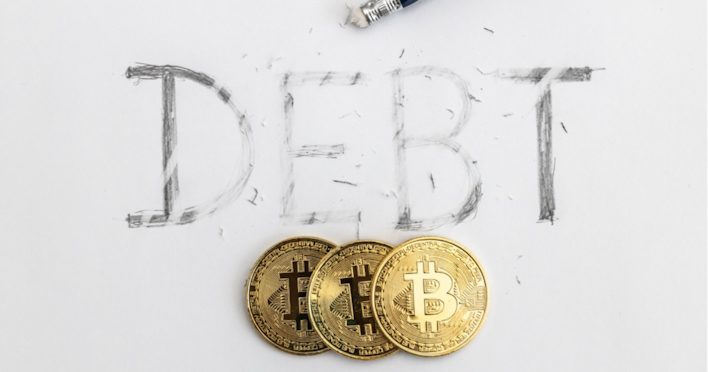
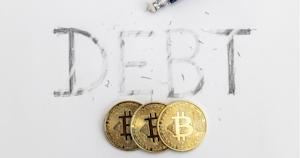
Raising the Ceiling As Tech Keeps Screaming
By Sam Callahan
Politicians will continue to spend money they don’t have to paper over problems now, creating bigger ones for future generations to grapple with. Buy Bitcoin.


Climbing a Wall of Worry
By Sam Callahan
Market participants are scratching their heads and wondering, “Is this rally for real?” Let’s look at the data to discern some of the bullish and bearish arguments for where markets will move forward from here.


More Holes Than Suisse Cheese
By Sam Callahan
There are lots of words to describe the last week when it comes to the traditional financial system, but orderly is certainly not one of them.

